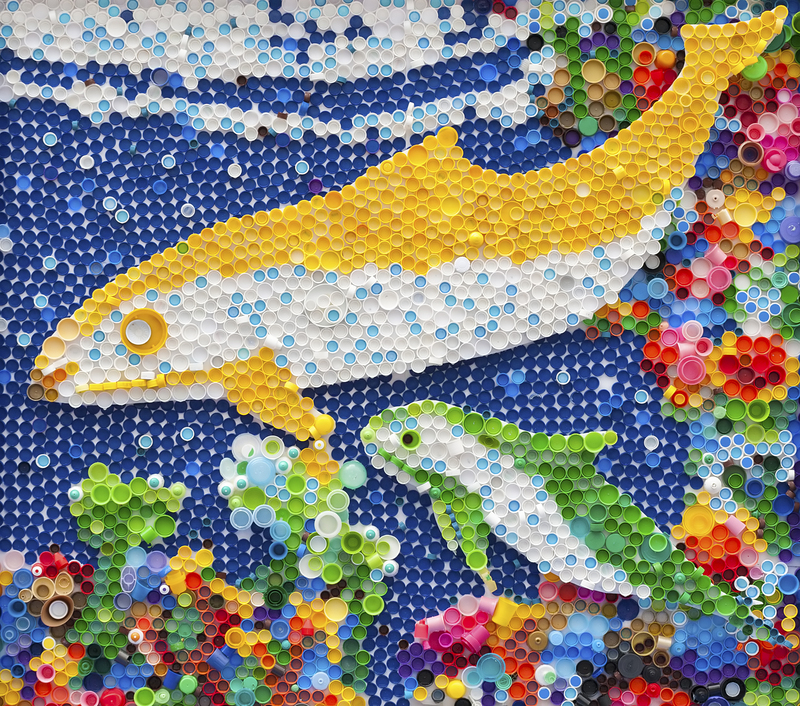Innovative Approaches to Stop Microplastic Pollution Now
Microplastic contamination is a pervasive and growing threat to our environment, wildlife, and even human health. From the highest mountains to the deepest parts of the ocean, microplastics--tiny particles less than 5mm in diameter--have infiltrated virtually every corner of our planet. Tackling this crisis calls for immediate, innovative solutions and coordinated global action. In this article, we'll explore cutting-edge technologies, pioneering research, policy developments, and community-driven methods aimed at stopping microplastic pollution before it's too late.
Understanding the Microplastic Menace
Before delving into the latest solutions, it's crucial to understand how microplastics are produced, distributed, and how they persist in the environment. Microplastics are created both intentionally (such as microbeads in cosmetics) and as a result of the breakdown of larger plastic items due to weathering, sunlight, and abrasion.
- Sources include: Synthetic fibers from clothing, personal care products, tire wear, industrial processes, and plastic packaging.
- Estimated ingestion: Humans consume up to five grams of microplastics per week--equivalent to a credit card.
- Environmental damage: Microplastics harm oceans, rivers, soil, and wildlife, disrupting ecosystems on a global scale.
With the dire statistics at hand, let's examine innovative strategies being researched and implemented to halt the spread of microplastic pollution.

Technological Innovations for Microplastic Reduction
1. Advanced Filtration Systems
Wastewater treatment plants are major pathways for microplastics entering natural water bodies. Next-generation filtration technologies, such as membrane bioreactors, nanoscale filters, and electrocoagulation, are now being installed to trap even the tiniest particles.
- Membrane bioreactors: These combine filtration and biological treatment for higher efficiency.
- Nano-filters: Capable of removing sub-micron plastics from wastewater streams.
- Retrofitting systems: Existing treatment plants are increasingly adapting to new microplastic filtration standards.
2. Washing Machine Filters and Laundry Solutions
The fashion industry and household laundry are primary contributors to microfiber pollution. To address this, companies and researchers are designing washing machine filters specifically targeting microfibers shed during washing.
- Integrated filters: New washing machine models include built-in microfiber traps.
- External devices: Affordable filter attachments can be added to existing machines.
- Fiber-catching laundry bags: Special bags prevent synthetic fibers from reaching the wastewater during washing.
3. Microplastic-Snaring Ocean Vessels and River Barriers
Some of the most exciting innovative approaches to halt microplastic dispersal involve active removal from water bodies:
- Ocean-cleaning vessels: Automated ships like The Ocean Cleanup's Interceptor capture floating plastics--including microplastics--before they reach the sea.
- River skimmers: Devices that filter debris from rivers are being deployed in high-traffic pollution zones.
4. Biodegradable Plastic Alternatives
Preventing microplastic pollution at the source is perhaps the most effective strategy. Scientists are creating biodegradable materials for use in packaging, textiles, and disposable items:
- Plant-based bioplastics: Derived from corn starch or algae, these break down more readily without releasing microplastics.
- Edible packaging: Solutions like seaweed-based wraps eliminate residual waste entirely.
Policy and Regulation: Driving Systemic Change
5. Banning Microbeads and Single-Use Plastics
Significant progress has been made through legislative action worldwide. Many countries have banned microbeads in personal care products and taken steps to phase out single-use plastics.
- Microbead bans: Over 60 countries prohibit the manufacture and sale of microbeads in cosmetics.
- Single-use bans: Policies are expanding to regulate plastic straws, bags, and utensils on a global scale.
6. Industry Standards and Certification
Innovative certification programs encourage companies to reduce their microplastic footprint:
- Eco-labels: Identifying products that meet microplastic-reduction criteria.
- Textile manufacturing standards: Prompting the development of low-shedding fabrics and recycled materials.
7. Producer Responsibility and Plastic Taxation
Extended Producer Responsibility (EPR) laws make manufacturers financially accountable for the plastic waste generated by their products. Coupled with plastic taxes and incentivized recycling, these policies push industries toward sustainable innovation.
Scientific Research & Emerging Solutions
8. Engineering Microplastic-Degrading Enzymes
Perhaps the most ground-breaking approach stems from bioengineering. Scientists have discovered and modified enzymes capable of breaking down plastics into harmless base molecules for reuse.
- PETase and MHETase: These enzymes digest PET plastics, showing promise as a tool for environmental remediation.
- Microbial consortia: Engineered bacterial communities work synergistically to degrade diverse plastic types.
9. Magnetic Extraction Techniques
Novel magnetic powder techniques are being trialed to remove microplastics from water. The process involves binding microplastics to magnetic particles and then extracting them from the liquid using magnetic fields.
- Safe reagents: Research focuses on non-toxic, recoverable magnetic powders suitable for large-scale deployment.
- Potential: Could revolutionize clean-up in lakes, reservoirs, and wastewater plants.
10. Smart Sensing and Data Collection
Advances in sensor technology--including AI-powered drones, satellite imagery, and in-stream sensors--allow for real-time tracking and data-driven identification of microplastic hotspots. These systems improve targeted intervention and policy effectiveness.
Community Engagement & Grassroots Movements
11. Citizen Science Initiatives
Public involvement is vital. Citizen scientists collect samples, document plastic pollution, and influence decision-makers with robust data.
- Beach clean-ups: Volunteers physically remove plastics and record findings.
- Monitoring programs: Apps and kits empower individuals to survey microplastics in local waterways.
12. Educational Campaigns and Behavioral Change
Raising awareness is an essential pillar in reducing microplastic generation:
- School curricula: Integrating microplastic education inspires environmentally-conscious habits early on.
- Consumer campaigns: Promoting reusable alternatives and responsible disposal practices.

The Future: Scaling Up to Stop Microplastic Pollution Globally
While innovation is flourishing, the scope of the microplastic problem requires that solutions be implemented at scale. Here's what it will take:
- Investment: Significant funding into research, infrastructure, and startups bringing new technology to market.
- Public-private partnerships: Collaborations between governments, NGOs, and businesses drive rapid adoption of best practices.
- Legislative synchronization: Aligning regional and global policies to maximize impact on microplastic flows and trade.
The Role of Individuals
Each one of us can play a part in ending microplastic contamination:
- Choose natural fiber clothing over synthetics.
- Avoid products with plastic microbeads.
- Use washing machine filters and laundry bags.
- Ask brands about their microplastic policies.
- Support legislation targeting single-use and microplastic-producing plastics.
Toward a Microplastic-Free World: Final Thoughts
The challenge of microplastic pollution is daunting, but not insurmountable. Through technological ingenuity, systemic policy changes, industry leadership, and public engagement, humanity can reverse the tide. By supporting and advocating for these innovative solutions to microplastic waste, we move closer to a cleaner, healthier, and more sustainable future for generations to come.
Let's act now--before the world's smallest plastics become our biggest environmental legacy.